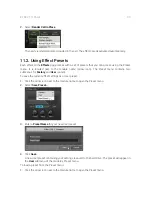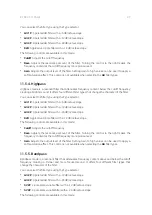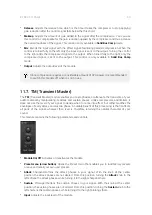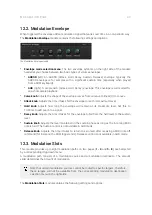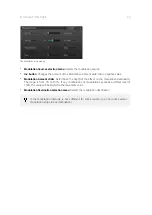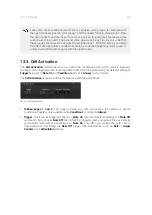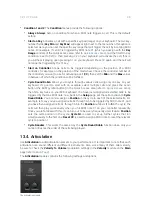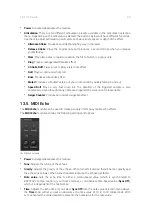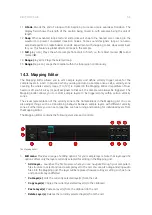
13.2. Voice Groups
The
Voice Groups
module allows you to create virtual groups with limited voices. This can be
useful when, for example, simulating a real drum set, where an open and a closed hi-hat would
never occur at the same time, you'd assign both cells to a voice group and set the
Voices
setting
to 1, which would allow only one of the cells in the voice group to play at a time. But there can be a
number of creative reasons for using voice groups.
The
Voice Groups
module contains the following settings and options:
The Voice Groups module.
•
Voice group
: Assigns a cell to either no voice group (this is the default
Kit
setting) or to any of
the 128 available voice groups from here. Use the pencil button to rename a voice group for
more transparency.
•
Voices
: Sets the number of voices allowed for the given voice group (1 to 127) with this control.
•
Mode
: Selects a mode to decide which notes to choke if the voice group runs out of voices.
You can choose from:
•
Kill Any
: Removes any note.
•
Kill Oldest
: Removes the earliest note played.
•
Kill Newest
: Removes the last note played.
•
Kill Highest
: Removes the highest note played.
•
Kill Lowest
: Removes the lowest note. For example, if the voice group allows for three
simultaneous voices, and you play four notes in a row, the first note will be muted for the
fourth note to be audible when you set the Mode to
Kill Oldest
.
•
Fade (ms)
: Sets the time that voices overlap before cutting each other off completely (for
instance, the previously played voice sustains for a while even after a new voice has been
triggered). This prevents an overly abrupt transition between voices. Available settings are 0 to
999 milliseconds.
•
Excl
: This advanced programming feature allows for even more complex muting schemes;
assign multiple voice groups to an exclude group to make the assigned groups mute each
other.
You could assign a blank sample (no sound) to a group so that triggering this cell
turns off any loops playing and silences the output.
SETUP PAGE
46


